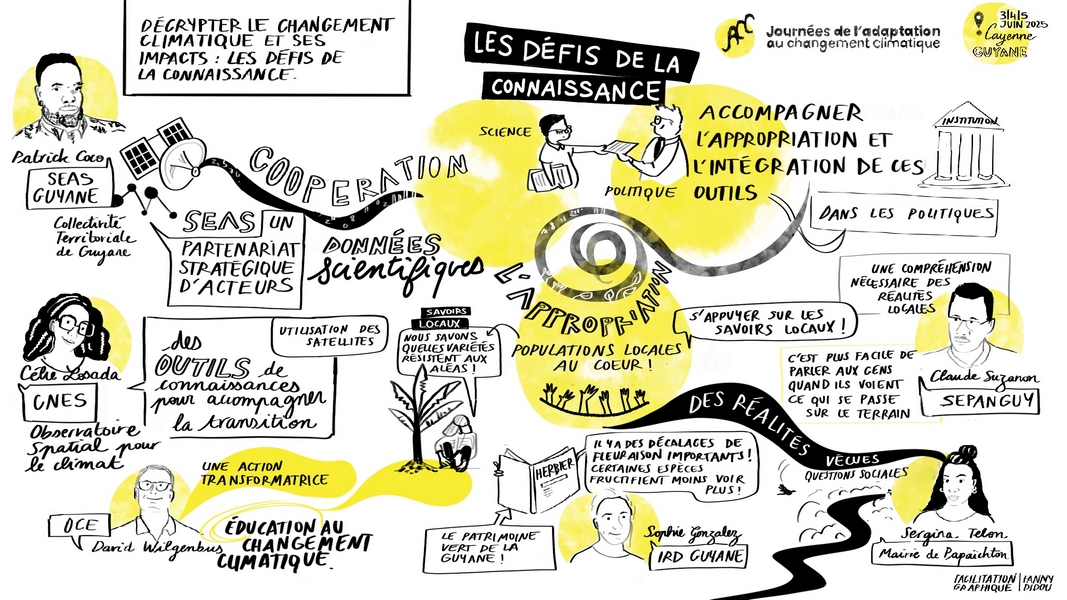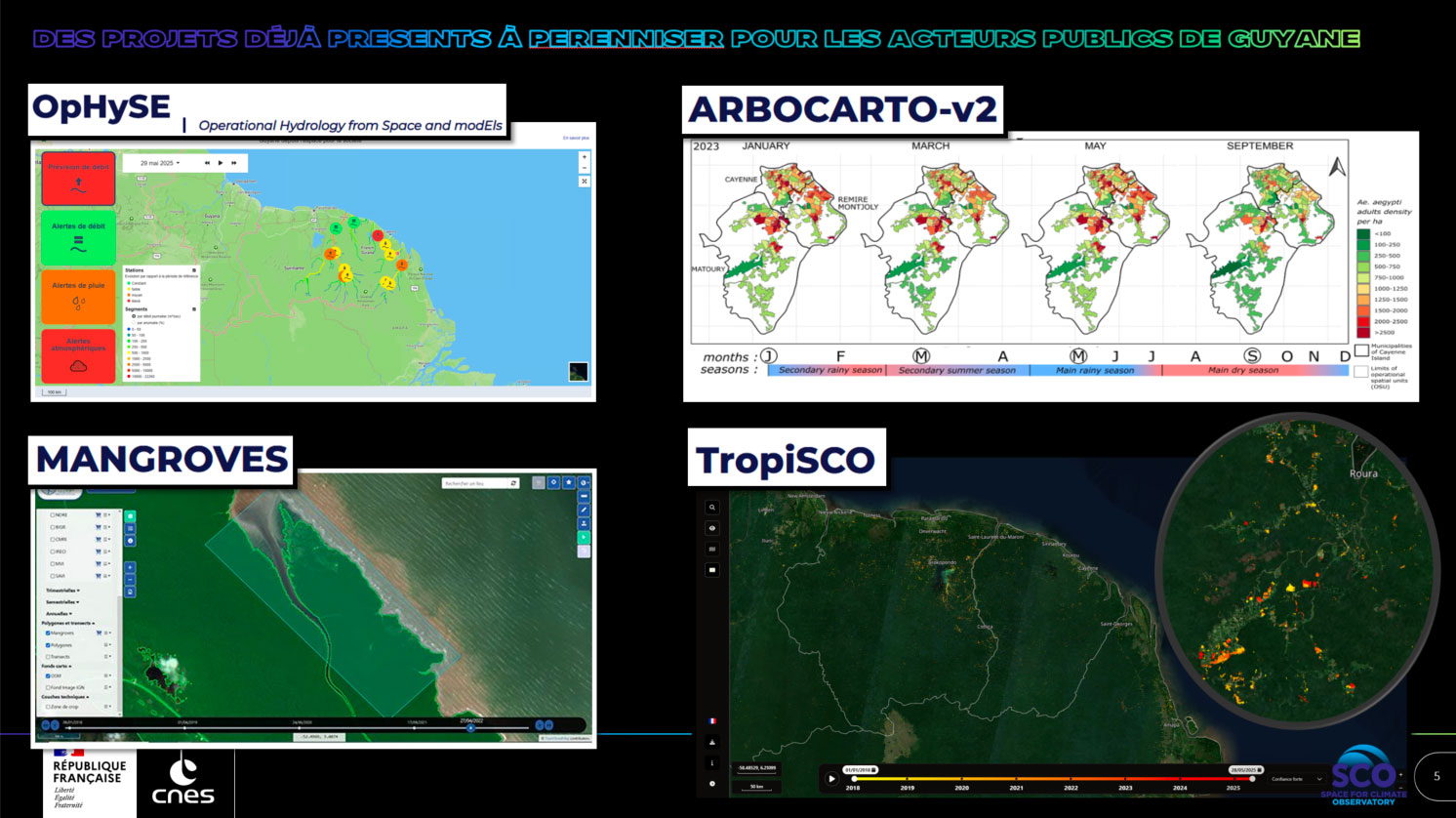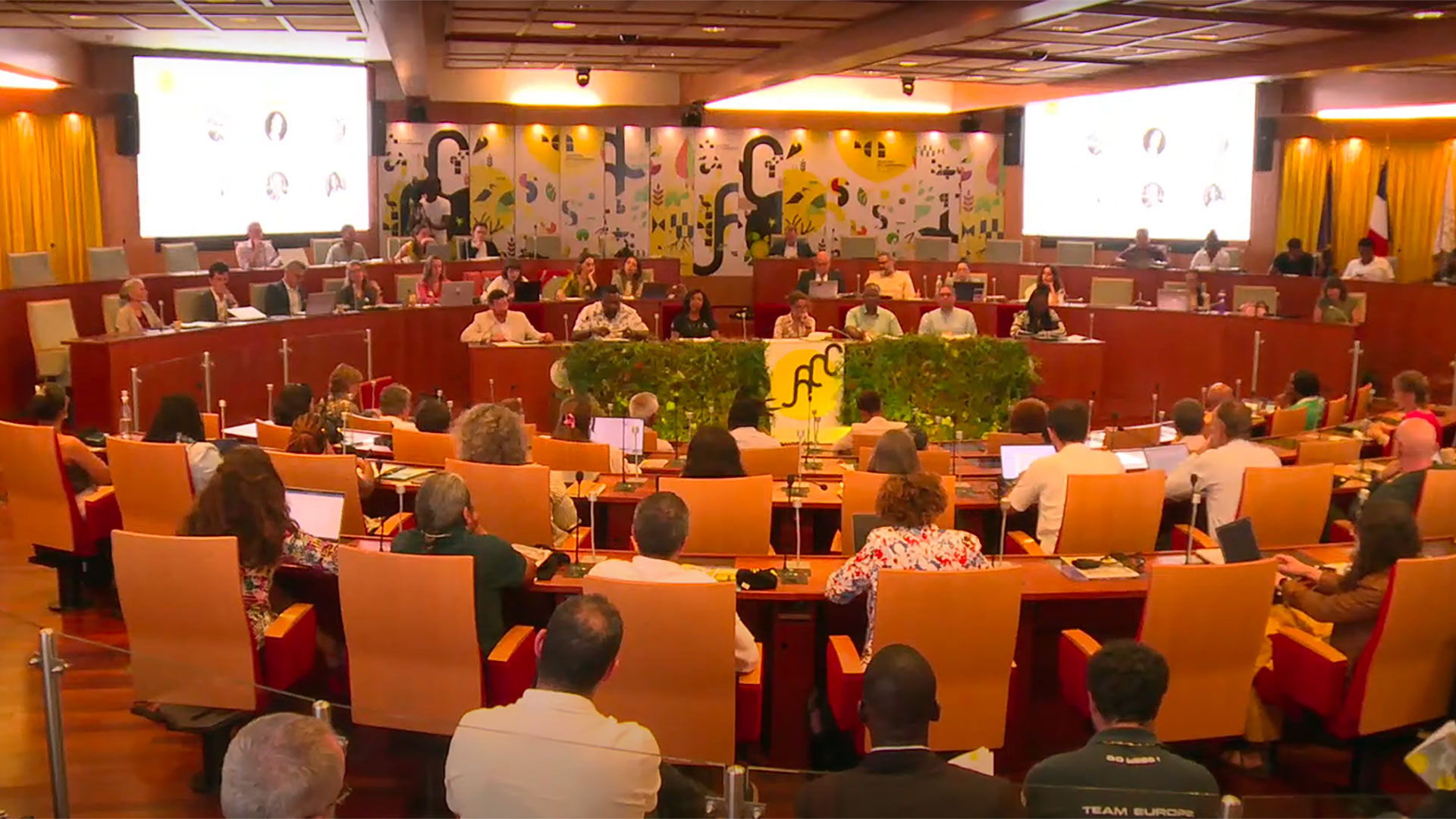A look back at CCAD French Guiana 2025
Scientists are sounding the alarm: we're heading for a world at +3°C globally, and +4°C for Europe. In France, mobilization is guided by the National Plan for Adaptation to Climate Change (PNACC, Plan National d'Adaptation au Changement Climatique). Discover here the interview of Diane Simiu, Director of Climate and Air Energy Efficiency at the French Ministry of Ecological Transition, about broad outlines and challenges of the PNACC3.
Why CCAD in French Guiana?
|
Although its climate is renowned for its stability, French Guiana, an ultra-marine territory located in South America, is not immune to climate disruption. In fact, a study of the evolution of Guyana's climate over the past half-century (Météo France, 2024) shows a 1.53°C rise in maximum temperatures, coupled with more frequent extreme events, particularly rainfall surpluses and deficits. "Unprecedented floods and extreme droughts, weakened forests, difficulties of access to water - these are just some of the problems that are exacerbating the isolation of populations," reminded Jean Paul FERREIRA, Vice-President of the CTG, during the opening plenary session. |
Did you know? While the SCO builds its action on the use of satellite data, French Guiana is home to the Guiana Space Center. What they also have in common is the notion of climate. After all, Guiana isn't home to European launchers by chance! While its equatorial position at 5.3° North latitude gives rockets a boost in power thanks to the Earth's natural slingshot effect, its climate, free from cyclones, earthquakes and tidal waves, is a safe asset for activities and take-offs. |
Faced with these realities, ADEME, AFD, AUDeG, the Regional bank, CTG and government departments decided to create a forum for exchanging and sharing knowledge and solutions. Recognized as a "territorial COP", the CCAD had a number of missions to fulfil:
- To recall the conclusions of the GuyaClimat study (BRGM, Météo France, 2022), which announced alarming climate forecasts for 2100: 46 to 84 cm rise in mean sea level, 4 to 34% decrease in rainfall, 25 to 30% increase in winds, 1.5 to 4.5°C rise in temperatures.
- Deciphering climate change and its impacts: issues that raise many questions, to which the round table speakers provided answers.
🎥 Replay of the round table available HERE (in French).

Extract from the graphic mediation produced by Fanny DIDOU throughout the days.
Why did the SCO take part in Guyana's CCAD?
For the SCO, taking part in the CCAD was an opportunity to listen in on the discussions between scientists and local decision-makers, with a view to forging concrete links, notably in collaboration with the SEAS Guyane station, which acquires and distributes satellite images for use by the region's public players.
Alongside the SEAS Guiana project manager, the SCO presented the international alliance and reaffirmed its support for the emergence of digital mapping solutions serving territorial resilience:
- Presentation of French and international institutional players.
- Explanation of the central role played by CNES in France in coordinating the initiative, and in supporting and funding projects.
- Definition of the principles of criteriology: to qualify for the SCO label, candidate projects must use satellite data and other data sources to map hazards, vulnerabilities and future scenarios (areas at risk of flooding, drought, coastline recession, epidemic outbreaks, etc.). These interface projects between science, industry, decision-makers and society need to be anchored locally and replicable in other places.
 |
◀︎ In particular, the SCO presented solutions developed in French Guiana (OpHySE, Mangroves, Arbocarto, TropiSCO), which need to be publicized and brought to life in order to perpetuate them and make them available to public players. He also gave examples of projects developed in neighboring or ultra-marine territories on themes also involved in French Guiana (ALTELYS, Chove-Chuva, TAHATAI, LITTOSCOPE). |
Thematic workshops for collective reflection on key issues for the region
How are we to live in Guyana's already overheated cities of tomorrow? How can we finance adaptation measures? How can we prepare for coastal and river risks? How can we ensure a paradigm shift towards greater sobriety in the use of natural resources? How can we protect vulnerable populations and anticipate the health impacts of climate change?
As François GEMENNE, lead author of the 6th IPCC report, reminds us, "climate change is accelerating inequalities in society and making populations more vulnerable", we must no longer oppose decarbonization and adaptation measures, but rather act on both fronts.
Drawing on the experiences, successes and lessons learned from the solutions developed, up to 60 people took part in 6 workshops. Discussions led to the formulation of priority strategic objectives and courses of action. The territorial dialogue highlighted several key cross-functional areas on which to build a coherent, effective regional climate adaptation policy that is firmly rooted in local dynamics:
- Strengthening territorialized knowledge
→ Observation tools, spatialization of hazards and resources, shared diagnostics. - Training, awareness-raising and a culture of adaptation
→ For elected representatives, technicians, young people, the media, citizens. - Adapted decision-making and planning tools
→ Urban planning, health, infrastructure, risk management. - Promoting local knowledge and regional cooperation
→ Amazon-Caribbean cooperation, experience sharing, pooling of methods. - Adapted and sustainable financing
→ Advocacy, coordination, specific measures for overseas territories and vulnerable areas.
These priority areas will thus feed into the Guiana mission of the 3rd PNACC and support a Guianese contribution to the COP 30 to be held in Belem (Brazil) in November 2025.
The SCO confirms its role as a catalyst in plenary session
With examples to back it up, the SCO has shown that it is an ally in the development of climate solutions and scientific diplomacy. CNES, as the driving force behind the initiative and a major player in French Guiana, must support actions in this direction. A roadmap could be built around 4 pillars of action:
-
Decompartmentalizing: linking researchers, operators, local authorities and Guyanese civil society.
👉 Sustaining existing SCO tools in the region -
Territorialize: produce contextualized indicators and tools for French Guiana.
👉 Target two or three priority areas for new SCO projects: urban development, flooding, forest ecosystem monitoring, etc. -
Connect: open up cooperation with the Amazon, Caribbean and overseas basins.
👉 Extend existing SCO projects in French Guiana to the West Indies, neighboring countries (Suriname, Brazil) or the Amazon observatory network. -
Support: accompany project leaders towards certification, funding and outreach.
👉 Opening of the annual call for projects on September 1, 2025




